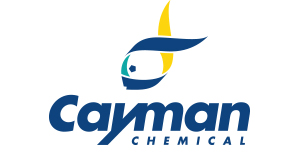K-Ras Isoform B (G12V mutant; human, recombinant)
K-Ras Isoform B (G12V mutant; human, recombinant)
SKU
CAY40373-100
Packaging Unit
100 µg
Manufacturer
Cayman Chemical
Availability:
loading...
Price is loading...
Formulation: 40 mM Tris-HCl, pH 8.0, with 110 mM sodium chloride, 2.2 mM potassium chloride, 0.04% Tween20, 20% glycerol, 3 mM DTT, and 120 mM imidazole
Purity: ≥53% estimated by SDS-PAGE
Formula Weight: 0
Shelf life (days): 180
Notes: K-Ras is a small GTPase and member of the RAS family of GTPases with roles in apoptosis, as well as cell proliferation, survival, and migration.{66623,31183} K-Ras is composed of a guanine nucleotide-binding domain containing an active site, an effector binding domain, and an isoform-specific C-terminal hypervariable region (HVR) that differs between K-Ras isoforms A and B due to alternative splicing.{66623,54879,68688} The active site cycles between GDP-bound inactive and GTP-bound active states and is regulated by its associations with GTPase-activating proteins (GAPs) or guanine nucleotide exchange factors (GEFs).{54879,2798} K-Ras isoform B is ubiquitously expressed and is tethered to the intracellular side of cell membranes via farnesyl lipidation and to negatively charged regions of the membrane via two positively charged polybasic regions in the HVR.{66623,31741,68688} K-Ras(G12V), which contains a glycine-to-valine substitution at position 12, is constitutively active and associated with pancreatic, colon, and lung cancers.{67687} Tumor levels of K-Ras(G12V) are negatively correlated with overall survival in patients with colorectal cancer.{67688} Cayman's K-Ras(G12V) Isoform B (human, recombinant) protein consists of 184 amino acids, has a calculated molecular weight of 22 kDa, and can be used for enzyme activity assay, inhibitor screening, and inhibitor selectivity profiling applications.
Purity: ≥53% estimated by SDS-PAGE
Formula Weight: 0
Shelf life (days): 180
Notes: K-Ras is a small GTPase and member of the RAS family of GTPases with roles in apoptosis, as well as cell proliferation, survival, and migration.{66623,31183} K-Ras is composed of a guanine nucleotide-binding domain containing an active site, an effector binding domain, and an isoform-specific C-terminal hypervariable region (HVR) that differs between K-Ras isoforms A and B due to alternative splicing.{66623,54879,68688} The active site cycles between GDP-bound inactive and GTP-bound active states and is regulated by its associations with GTPase-activating proteins (GAPs) or guanine nucleotide exchange factors (GEFs).{54879,2798} K-Ras isoform B is ubiquitously expressed and is tethered to the intracellular side of cell membranes via farnesyl lipidation and to negatively charged regions of the membrane via two positively charged polybasic regions in the HVR.{66623,31741,68688} K-Ras(G12V), which contains a glycine-to-valine substitution at position 12, is constitutively active and associated with pancreatic, colon, and lung cancers.{67687} Tumor levels of K-Ras(G12V) are negatively correlated with overall survival in patients with colorectal cancer.{67688} Cayman's K-Ras(G12V) Isoform B (human, recombinant) protein consists of 184 amino acids, has a calculated molecular weight of 22 kDa, and can be used for enzyme activity assay, inhibitor screening, and inhibitor selectivity profiling applications.
| SKU | CAY40373-100 |
|---|---|
| Manufacturer | Cayman Chemical |
| Manufacturer SKU | 40373-100 |
| Package Unit | 100 µg |
| Quantity Unit | STK |
| Product information (PDF) | Download |
| MSDS (PDF) |
|

 Deutsch
Deutsch








